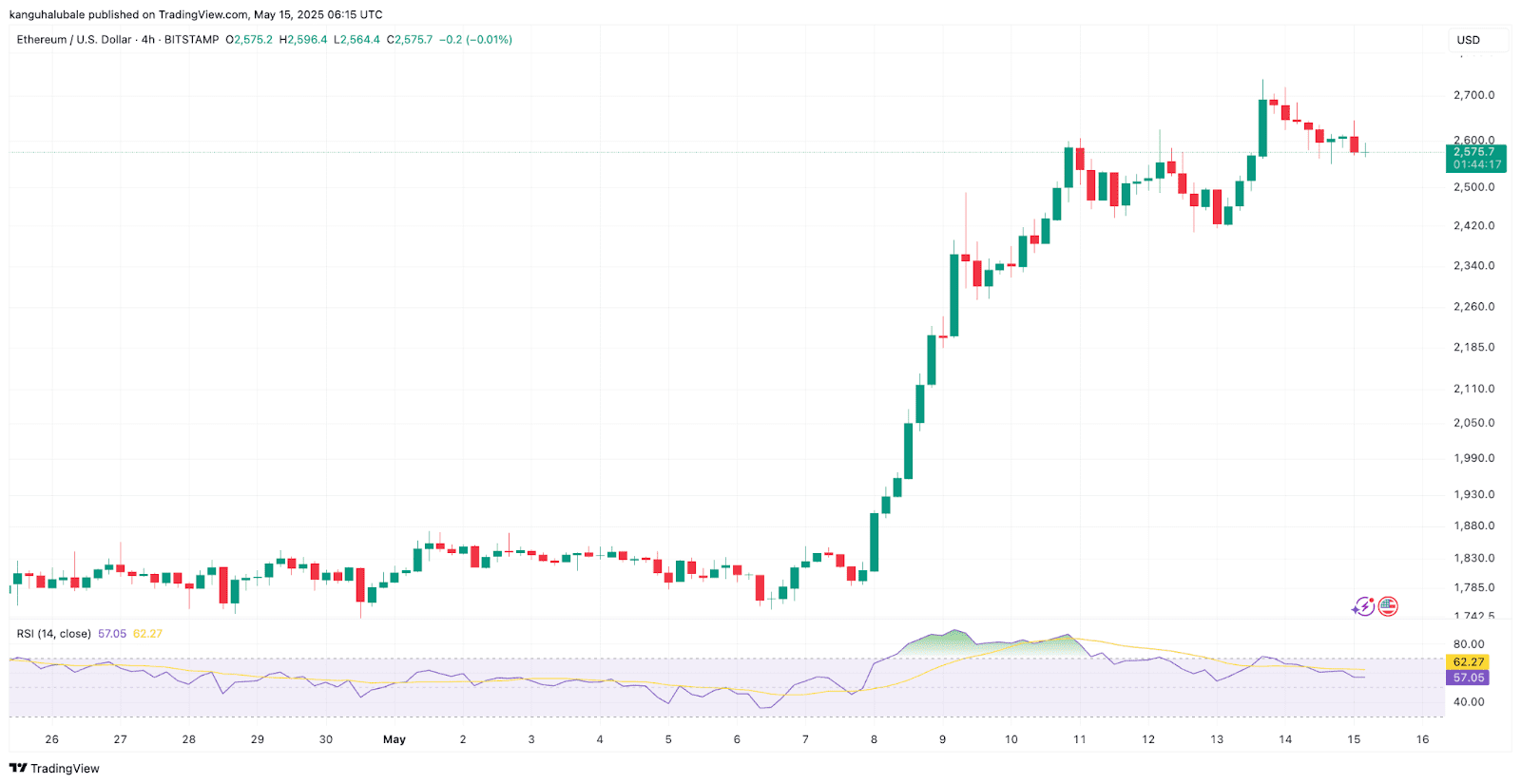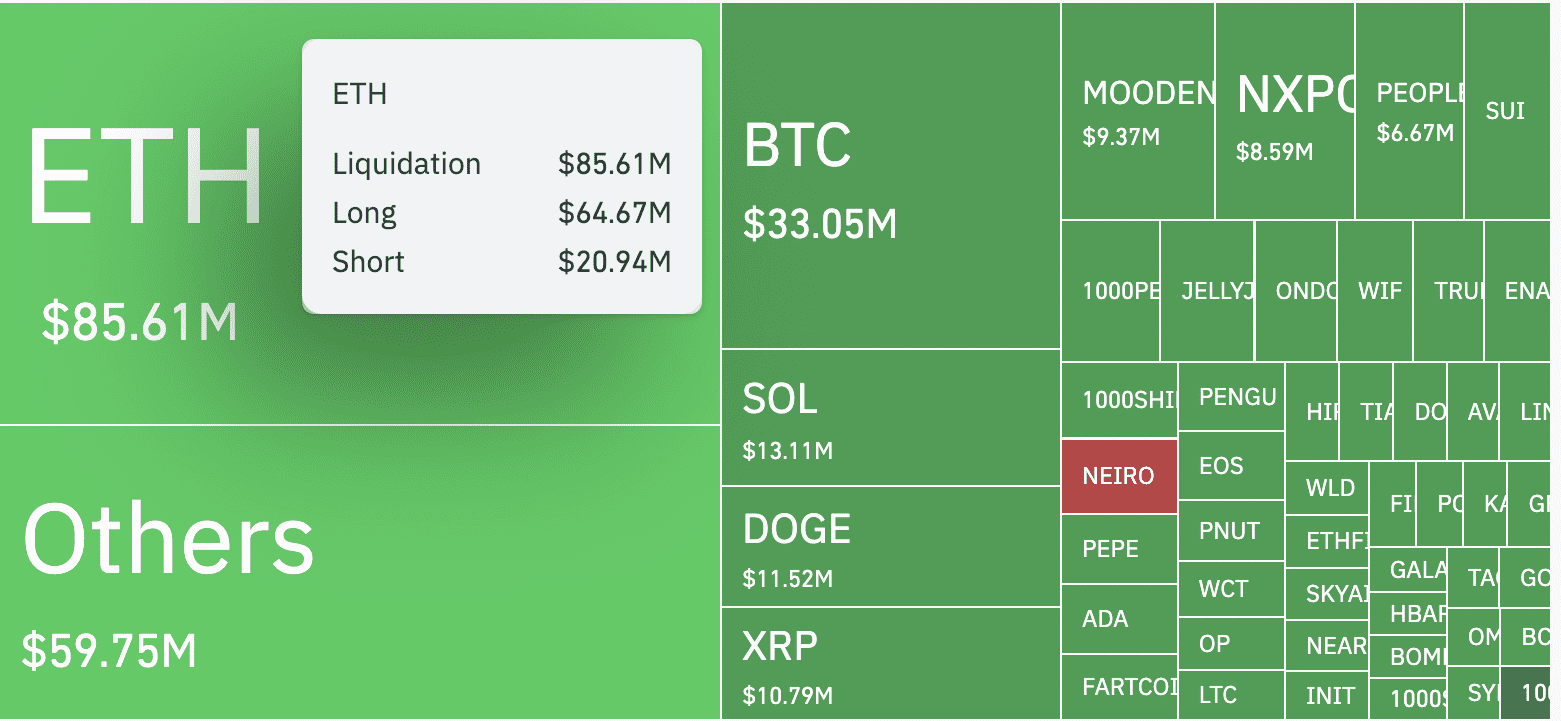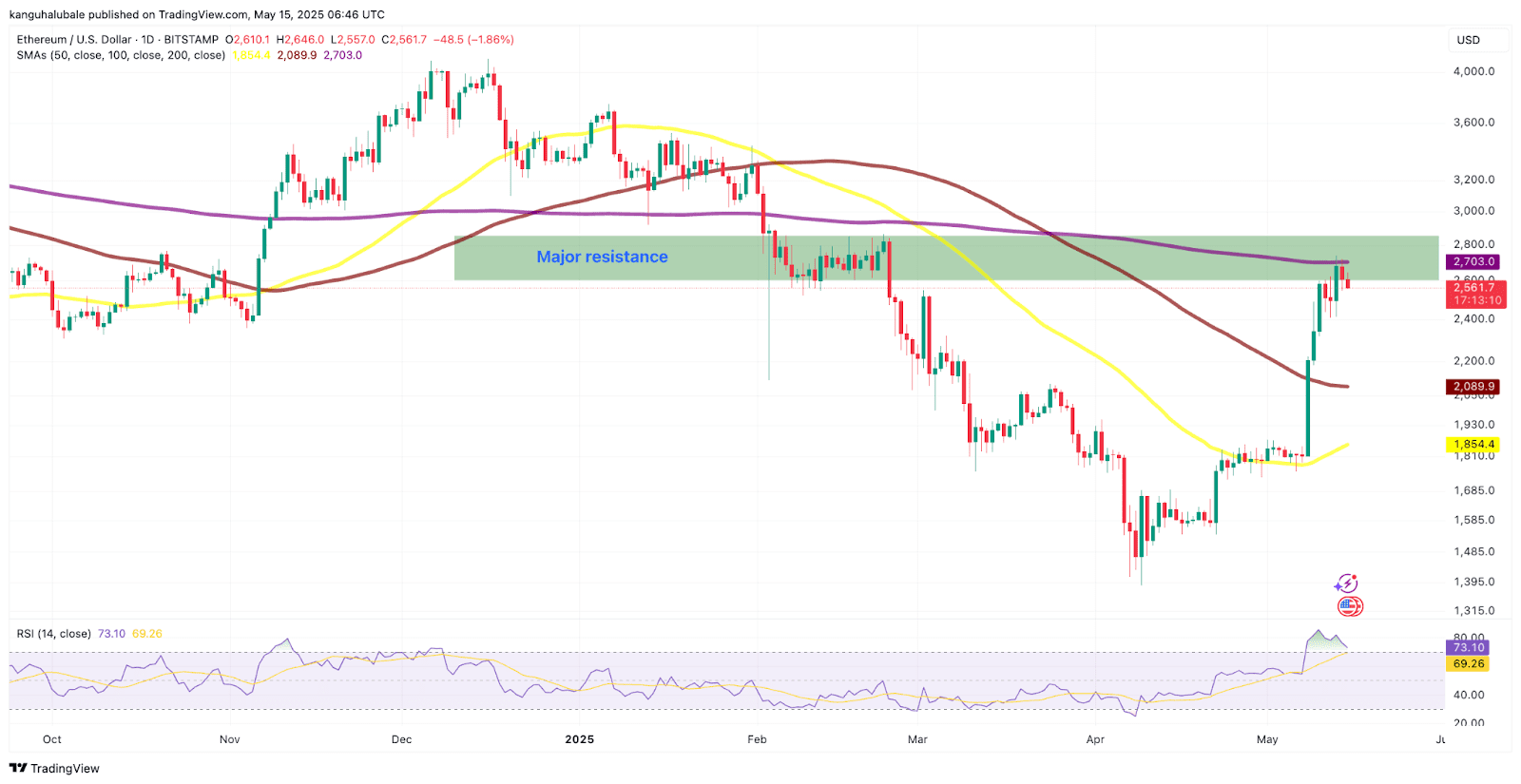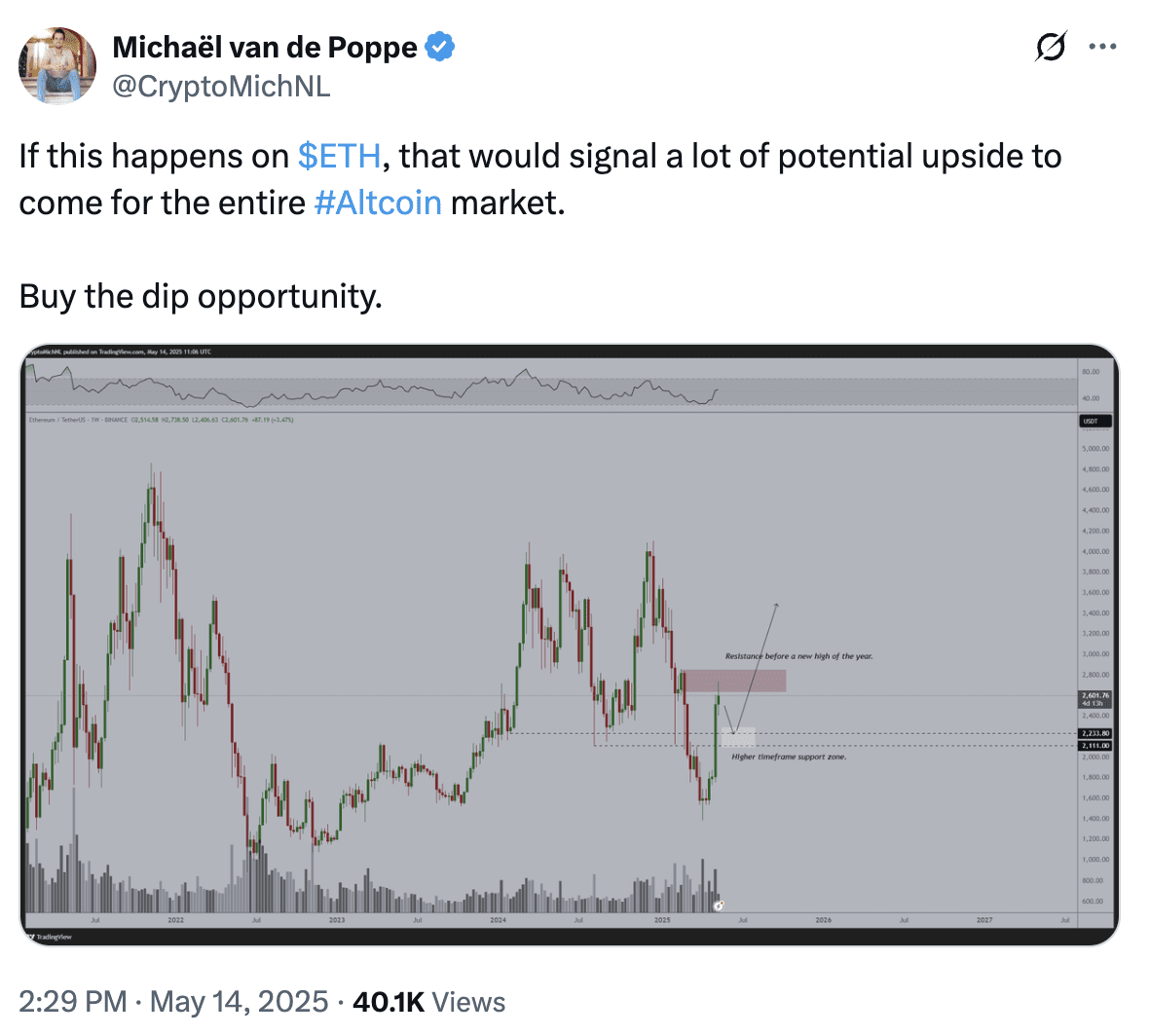Ethereum (ETH) experienced a price decrease of over 4% on May 15th, falling to around $2,575. This decline mirrored a broader downturn in the cryptocurrency market. Let’s delve into the key factors contributing to this price movement and what it might indicate for the future.
Key Factors Behind Ethereum’s Price Drop:
- Long Liquidations: A significant driver of the price decrease was the liquidation of long positions. Over $64 million in long positions were forcibly closed, compared to only $21 million in short positions. This indicates a weakening bullish sentiment and increased selling pressure.
- Decreased Open Interest (OI): Open interest in Ethereum derivatives markets fell by 4.5% to $31.52 billion. A decline in OI suggests reduced trader confidence and liquidity, prompting investors to exit the market and thus lowering prices.
- Overbought RSI: Ethereum’s rally in the preceding week pushed its Relative Strength Index (RSI) above 70 on both shorter and longer timeframe charts. An RSI above 70 signals ‘overbought’ conditions, often leading to profit-taking and price corrections.
- Technical Resistance: ETH faces resistance at the $2,600 to $2,800 level, coinciding with the 200-day Simple Moving Average (SMA). Overcoming this resistance is crucial for Ethereum to potentially achieve new highs in 2025.

Deeper Dive into the Market Dynamics:
The combination of these factors paints a picture of a market undergoing a correction after a period of upward momentum. Let’s analyze each factor further:
Long Liquidations and the Ripple Effect
Liquidations occur when a trader’s position is automatically closed by the exchange because they no longer have sufficient margin to keep the trade open. In this case, the large number of liquidated long positions suggests that many traders were over-leveraged and betting on continued upward price movement. When the price started to decline, these positions were automatically closed, further accelerating the downward trend. The broader crypto market also experienced a significant deleveraging event with total liquidations reaching $312 million across all assets.

Open Interest as a Confidence Indicator
Open interest is the total number of outstanding derivative contracts, such as futures and options, that have not been settled. A decrease in open interest suggests that traders are closing their positions, reducing both liquidity and market participation. This decline in confidence often precedes or accompanies price corrections.
RSI and Market Sentiment
The Relative Strength Index (RSI) is a momentum indicator that measures the magnitude of recent price changes to evaluate overbought or oversold conditions. An RSI above 70 indicates that an asset is potentially overbought, suggesting that the price may be due for a correction. Traders often use the RSI as a signal to take profits or reduce their positions.

Key Resistance Levels and Market Psychology
Technical analysis identifies key resistance levels where the price has previously struggled to break through. The $2,600 – $2,800 range, coinciding with the 200-day SMA, acts as a significant psychological barrier for Ethereum. If the price fails to break above this level, it reinforces the bearish sentiment and can lead to further selling pressure.

What’s Next for Ethereum? Potential Scenarios:
- Continued Correction: If the bearish sentiment persists and Ethereum fails to break above the $2,600 – $2,800 resistance level, the price could continue to decline towards the short-term target of $2,100 – $2,230.
- Consolidation and Rebound: Alternatively, Ethereum could find support at a lower level and enter a period of consolidation before attempting another rally. In this scenario, traders will be closely monitoring the price action and looking for signs of renewed bullish momentum.
- Market Dominance: Ether’s crypto market dominance has reached its most overheated levels since May 2021, which have historically preceded major pullbacks.

Popular crypto analyst Michael van de Poppe suggested that Ether needs to overcome the $2,600 – $2,800 resistance to signal a potential upside for the entire altcoin market. He also suggested a potential buying opportunity around $2,100 – $2,230, should the price fall to that level.

Conclusion:
Ethereum’s recent price drop is a result of a confluence of factors, including long liquidations, reduced open interest, overbought RSI conditions, and technical resistance. While the short-term outlook remains uncertain, the long-term potential of Ethereum remains strong, with continued development and adoption driving its growth. Understanding these market dynamics is crucial for investors and traders to make informed decisions.